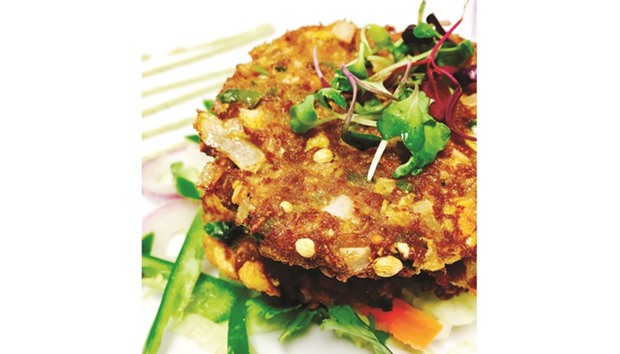The word “kebab” has a much diversified meaning and is a popular food item. You can spot kebabs on Michelin-starred restaurant menus to roadside food kiosks. They are versatile, delicious, served hot from the grill and come in a variation of meat combinations and taste options.
Kebab denotes a wide variety of meat dishes originating from Persia and later adopted by Middle East and now popular throughout the world. India being traditionally a vegetarian country was not the birthplace for kebabs. The traditional meat for a kebab is lamb but depending on local taste and geographical food preferences other meat items like beef, chicken, fish, seafood or even vegetarian foods like cottage cheese, falafel, soya or tofu may be used.
Talking about chapli kebab, it is a patty made from meat and is a popular meat item in Pakistan and Afghanistan. The meat patty is shaped round and flat and includes meat, egg, onion, tomato, bell pepper, chillies, coriander, pomegranate seeds, flour, spices, mint and seasoning of lemon juice and chat masala.
They are traditionally served with yoghurt raita, rice, salad and naan bread. The word “chapli” is derived from “chaprikh” which means flat. It is prepared flat and served with naan bread. Another story states that the chapli name is derived from “chappal,” the local name for the slippers and owing to its similarity of being flat shaped.
I always say whatever the story behind the name, just enjoys the hot and delicious kebabs and just think of ways to include them in your diet. To cook these kebabs you have two options, either you can shallow fry them or deep fry them in oil. Some old-school chefs/cooks also fry the kebabs in lamb fat over wood fired stoves to impart earthy flavours and also follow the traditional approach in making the kebab as authentic as possible.
I haven’t come across anybody nowadays who wishes their food to be fried in lamb fat, citing health conscious reasons. Personally, I prefer the shallow fry option, as the food absorbs less oil while cooking if done correctly.
The ingredients used in making these chapli kebabs are indigenous to the Afghanistan region, which is evident from the use of pomegranate seeds and dry coriander seeds, which make these kebabs so unique in taste. These kebabs are simple to make and make a great meal to enjoy with friends and family.
The reason for writing about chapli kebab is related to the visit of my friend Chef Zaheer Khan from United Kingdom to Las Vegas, who made these kebabs for my dinner and rekindled old memories of enjoying these kebabs when I was in Delhi. Thus I decided I’ll write about these kebabs and share my recipe with my readers so that they can also enjoy this classic kebab recipe for themselves.
Lamb Chapli Kebab
Ingredients
Minced lamb 500gm
Onion, chopped 1 no
Tomato, chopped 1 no
Eggs 2 no
Salt to taste
Ginger paste 1 tsp
Coriander seeds, crushed 1 tsp
Cumin seeds, crushed 1 tsp
Red chilli whole 4-5 no.
Pomegranate seeds 1 tsp
Green chilli, chopped 2-3 no.
Coriander leaves, chopped 3 tbsp
Lemon juice 1 tbsp
Corn meal 100gm
Oil to shallow fry
Fried onion, sliced 1 no
Garnish
Lemon wedge 2-3 no
Onion rings to garnish
Mint sauce to accompany
Chat masala to garnish
Method
Start by making an omelette, by heating oil in a frying pan and make an omelette with some seasoning.
Chop the omelette into small pieces and keep aside.
Add the finely chopped tomato and onion, ginger paste, coriander seeds, cumin seeds, pomegranate seeds, chopped green chilli, coriander leaves, lemon juice and seasoning to the minced lamb.
Sprinkle some corn meal (or all-purpose flour) into it, for the binding.
Add the prepared omelette into the above mixture and mix well to combine all the ingredients.
Take about 3-4 tbsp of mixture and using moist hands, flatten the mixture and keep aside.
Repeat until the entire mixture is used up.
Heat oil in a heavy bottom skillet or frying pan and shallow fry them over medium heat.
Turn to cook from both sides until golden brown in colour.
Remove on a kitchen paper towel to remove excess moisture.
Serve hot, garnished with onion rings, lemon wedges and mint sauce on the side along with naan bread.

Lamb Chapli Kebab. Photo by Chef Tarun Kapoor
